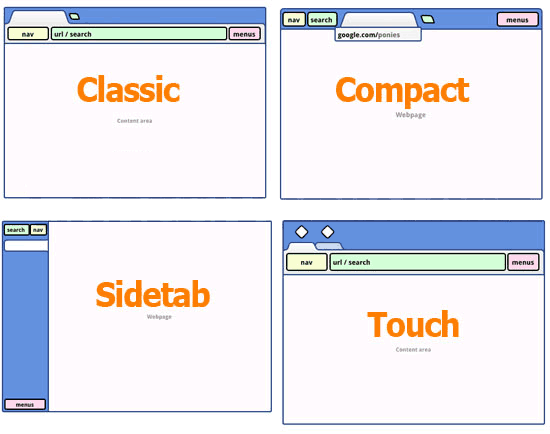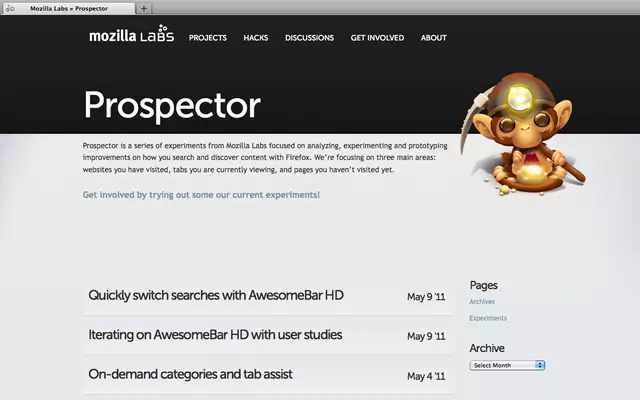Firefox and Chrome make an interface without an address bar

Interface designers from Google and Mozilla Labs can bring browser minimalism to the limit. They have already got rid of the status bar at the bottom of the window, and now they want to remove the address bar as well. This will free up an additional 30 useful pixels on the screen. In the new experimental interfaces of Firefox and Chrome, the address bar appears only when you hover over a tab or double-click on it.
The opinion of users about the trends of new design is fundamentally divided. Someone supports the release of the interface from the "extra" elements, and someone strongly opposed.
For the first time , compact navigation mode appeared in Chromium revision # 84971, and a few days ago it got into the Chrome 13 build. It is activated by selecting “Hide the toolbar" command in the context menu (by right-clicking on any tab). After that the address bar disappears and will only appear when you double-click on the current tab. If you move the cursor away, the URL disappears.
')

Apparently, the compact navigation mode with a hidden URL should go to the people along with the final release of Chrome 13, which will be pretty soon, given the rapid rate of change of versions in Chrome (most users probably stopped even watching the version number of their browser).
In Chrome 13, the “hidden URL” feature is not yet enabled by default, it needs to be activated manually. But this is not just an experimental design, but a deliberate step towards an already defined future. If designers continue their work, then one of the traditional elements of the interface may sooner or later disappear from browsers, which is confirmed by the latest statements by developers from Mozilla Labs.
One of the Firefox enthusiasts, designer David Regev, in an interview on the Mozilla Labs website explained in detail what “administrative debris” is in the interface. Administrative garbage, according to Taffy , includes everything that is not content, that is, toolbars, buttons and various widgets. Unfortunately, it is impossible to completely get rid of all this, because the user still needs to leave some opportunity to give commands to the browser. But there are various ways to hide it. As for the address bar, it should definitely disappear, said David Regev.
From the point of view of the designer, the address bar is simply terrible, because it always takes up space on the screen, but is used relatively rarely. In addition, it is also modal , which also does not add beauty to the interface. Under the modality it is understood that the address bar serves to simultaneously display the current URL and to enter the future URL, so it is not always obvious what mode it is in at the moment.
Confirming the policy of eliminating the address bar from the interface, Mozilla Labs recently released the LessChrome HD extension for Firefox 4, which works in much the same way as the above described compact navigation feature in the Google browser. The address bar and tabs appear only when you hover the cursor (see video ).

Source: https://habr.com/ru/post/119991/
All Articles